Unlikely inventions and ideas
This web post does not actually belong in the Closed Circuit rebreathers database. But since a lot of people’s imagination leads to extraordinary ‘inventions’, I decided to make this page with a wink. Curiously, some ideas are very old and at first glance seem crazy. Sometimes, however, such an idea comes to life and very special thoughts become reality. Who could believe in 1930 that a tiny chip could control oxygen dosage and we could breathe underwater for hours. Who could imagine that underwater scooters could propel us for hours through flooded caves. That’s why, nevertheless, this page of extraordinary inventions, often prompted by fantasy or desire. Some inventions seem so good that you are almost tempted to believe that this could really happen. If you have knowledge of other unusual underwater inventions I would be happy to add them to this page.
Man has always dreamt of being able to swim and breathe underwater just like a fish. Not surprisingly, many inventions and patents have been based on this idea. In recent years, various inventions have been made that can separate gases by using a molecular sieve. Think of the permeable membranes used to make nitrox. It doesn’t take much imagination to see this applied in an underwater environment. The laws of nature only work against us. The energy and amount of water required to produce an amount of oxygen suitable for humans cannot be generated by the respiratory organs. Tools like batteries could help here but again the technology is insufficiently developed to solve this energy issue. Ideas abound and perhaps one day this will become possible. Today (2022), these ideas are still unrealistic. Very different schools of thought such as oxynating blood and removing the Co2 from blood also seem closer than ever. In fact, these systems are used in the medical world for example in heart surgery. Such machines are also known as heart-lung machines but are also still far too large and complex to apply underwater.
Besides breathing underwater, humans also have a great imagination when it comes to practising special operations underwater. Think of the entertainment industry or film industry. Here, impossible situations can be made realistic by today’s technology.
Enjoy reading and I hope you can still contribute to this page.
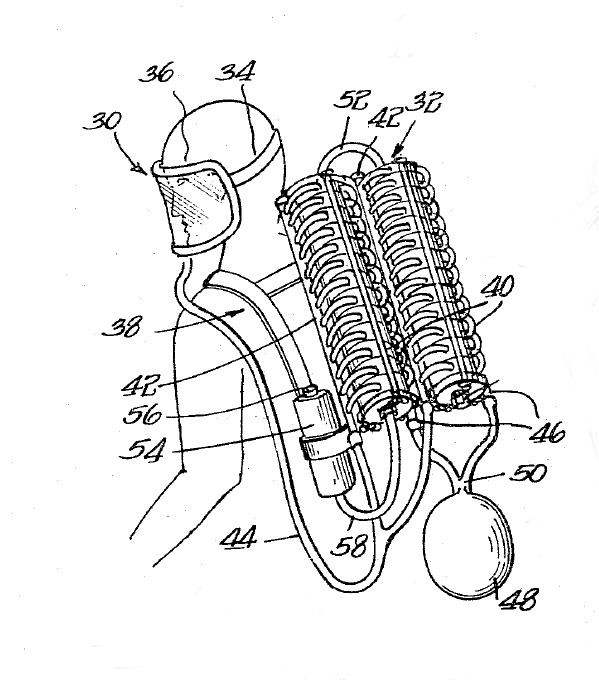
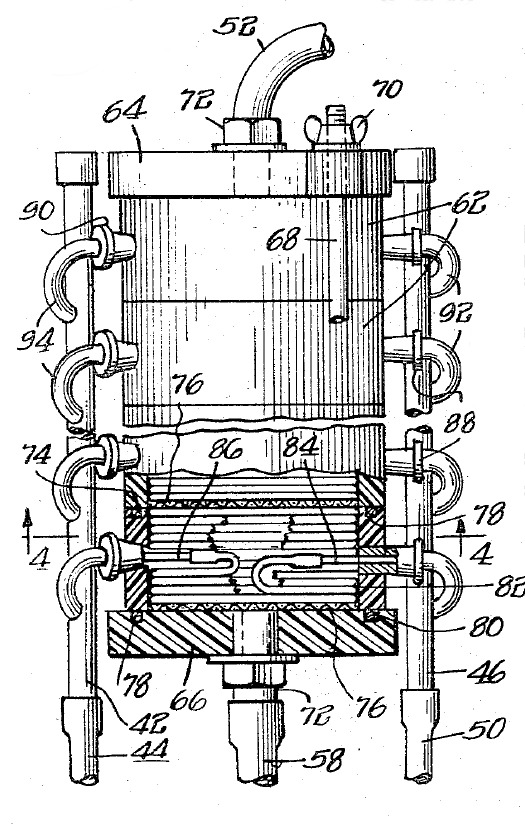
Many years before Bodell obtained his patent US 3,333,583, research was being done on ways to extract oxygen from ambient water. Bodell noted back in 1967 that polytetrafluoroethylene could be used to achieve liquid-gas separation. 53 years later, the first publication became public in which a nanomaterial was shown to be capable of doing this. Despite being technically possible, there are still many imperfections that remain unresolved. If we think of dissolved gas in a liquid in our case oxygen in water, there are major limitations to bring this to a realistic working model.
If we look at the amount of dissolved oxygen in water that can be recovered with membrane technology, it is completely different from the chemically bound molecules of oxygen and hydrogen. For example, in terms of volume proportion, water consists of 88% oxygen but 1 litre of clean water at 15 degrees Celsius can have only 10.07 ml of oxygen dissolved per litre. Were we to assume that a calmly swimming diver consumes 1 litre of oxygen per minute, approximately 1000ml O2/ 10.07 ml/l = 100 litres of water per minute would have to be moved through an optimally functioning membrane. Such a volume displacement will require at least 100 watts of power so 6 Kw per hour would be needed to move this volume of water. We then leave aside CO2 absorption.
Triton artificial Gill
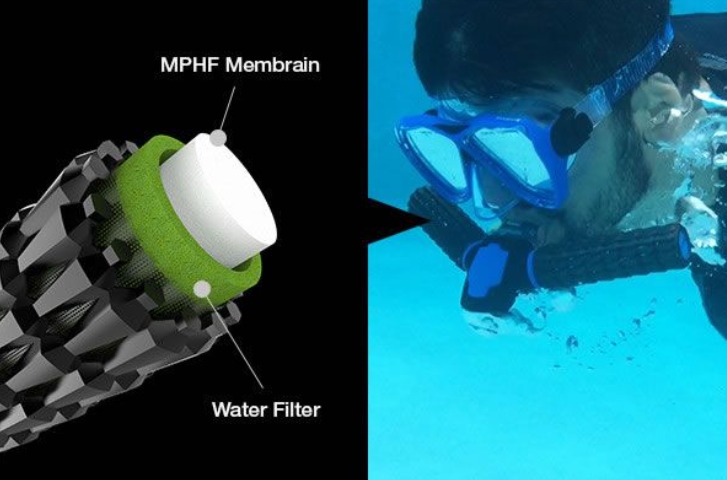
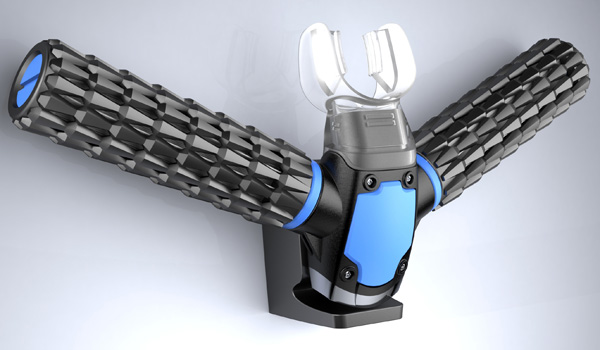
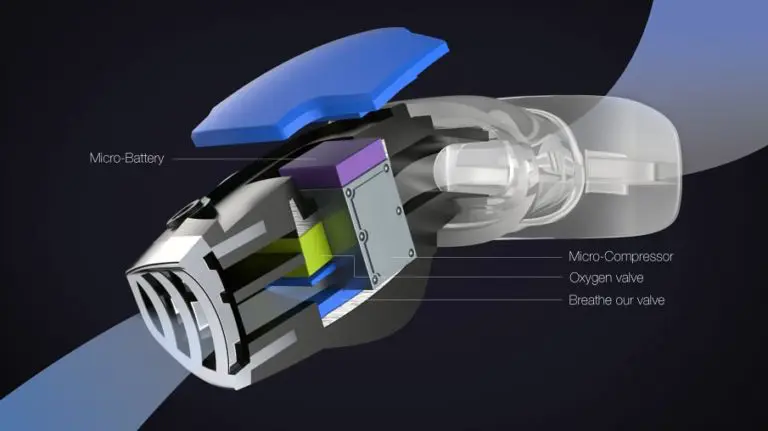
Breathing liquids
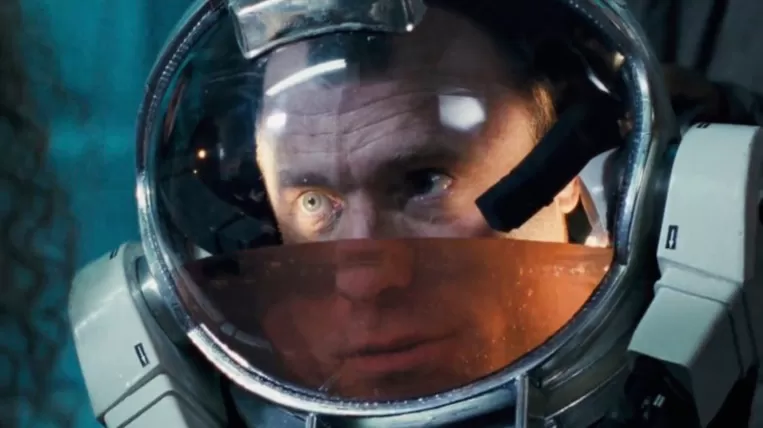
If our lungs fill up with water the little bit of oxygen dissolved in it is not enough for our endothermic bodies. We warmblooded creature need a lot more oxygen than water can provide. This is why the only warmblooded animals in the ocean breathe air, not water. When water fills the lungs of a whale the poor animal drowns much like we would when COVID-19 causes our lungs to flood with our own juices. Drowning is basically a form of suffocation.
This article gives much information about humans breathing liquified perfluorocarbon
This movie shows a animation of a medical treatment with PFC’s
This movie shows a new CCR concept from russia
Do not do this at home, you might get asphyxia
Diving with blood transfusion?
In the medical world, blood purification and oxygenation have long been applied to complex operations. Starting from this idea, Dr Arnold Landé took out a US patent (US 8.631788) on his idea of applying this technique to divers’ blood. In doing so, his patent describes the possibility of using membrane techniques to remove CO2 from the blood and add O2. The drawing in the patent shows a diver with Arterial and Venous blood connected to a device in his underwater vehicle. This system is motivated by the idea that the connection between the diver and the vehicle is done safely and the diver has sufficient blood volume to feed and fill the system. The breathing system uses Nasotracheal liquid breathing from the liquid respirator worn on his back.
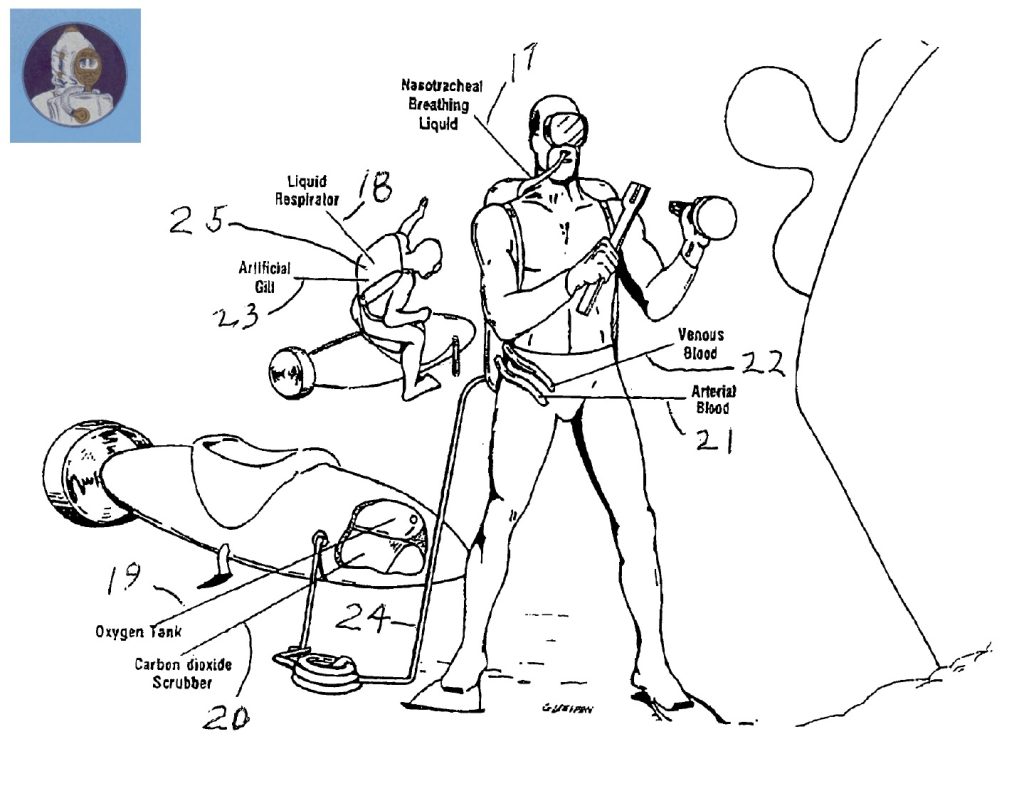
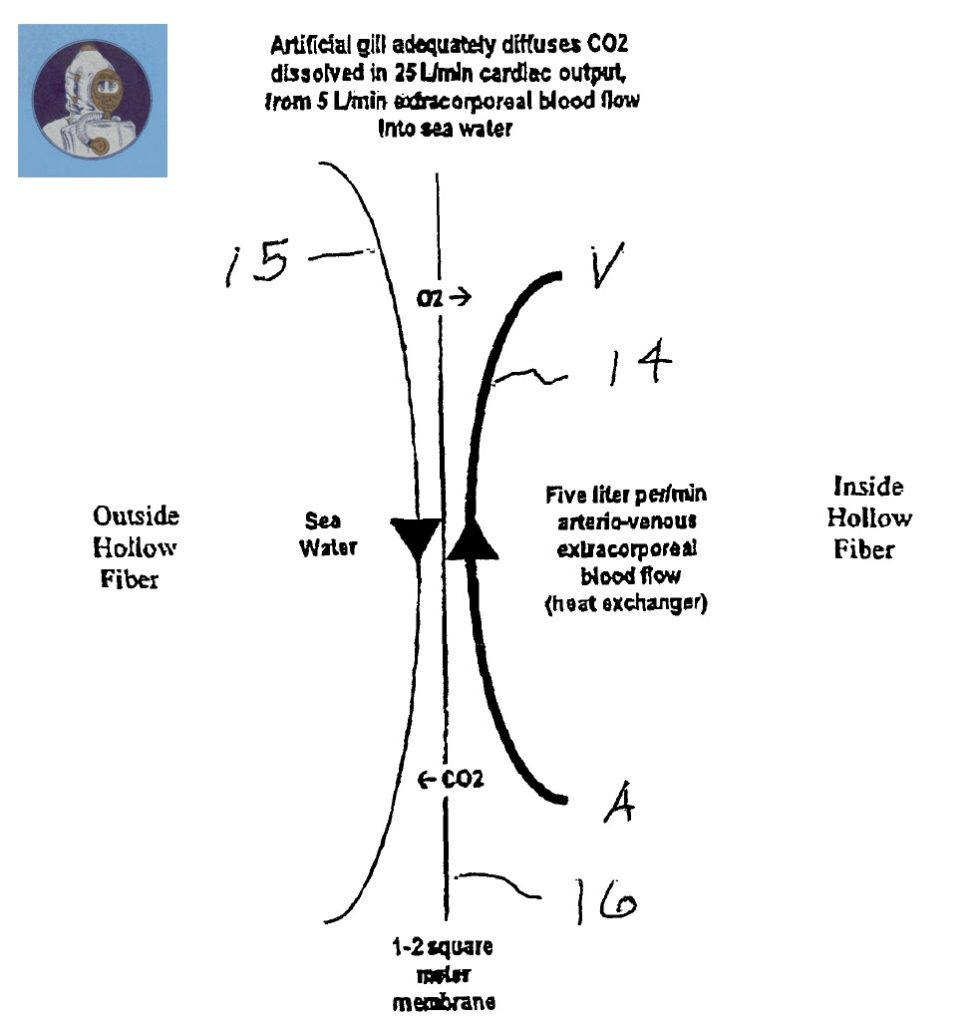
Underwater inanimatie objects
As long as humans have existed, there has been great respect for the sea. In the Middle Ages, fishermen were convinced that there were monsters in the sea. Illustrations of this can be found in many books. In more modern times, fear is mainly focused on jellyfish bites and the fear of sharks. The entertainment industry capitalized on this with films like JAWS and The Reef. As early as the 1920’s, requisites were therefore invented to serve for film productions or scare the hell out of people!

Therebreathersite was founded by Jan Willem Bech in 1999. After a diving career of many years, he decided to start technical diving in 1999. He immediately noticed that at that time there was almost no website that contained the history of closed breathing systems. The start for the website led to a huge collection that offered about 1,300 pages of information until 2019. In 2019, a fresh start was made with the website now freely available online for everyone. Therebreathersite is a source of information for divers, researchers, technicians and students. I hope you enjoy browsing the content!
